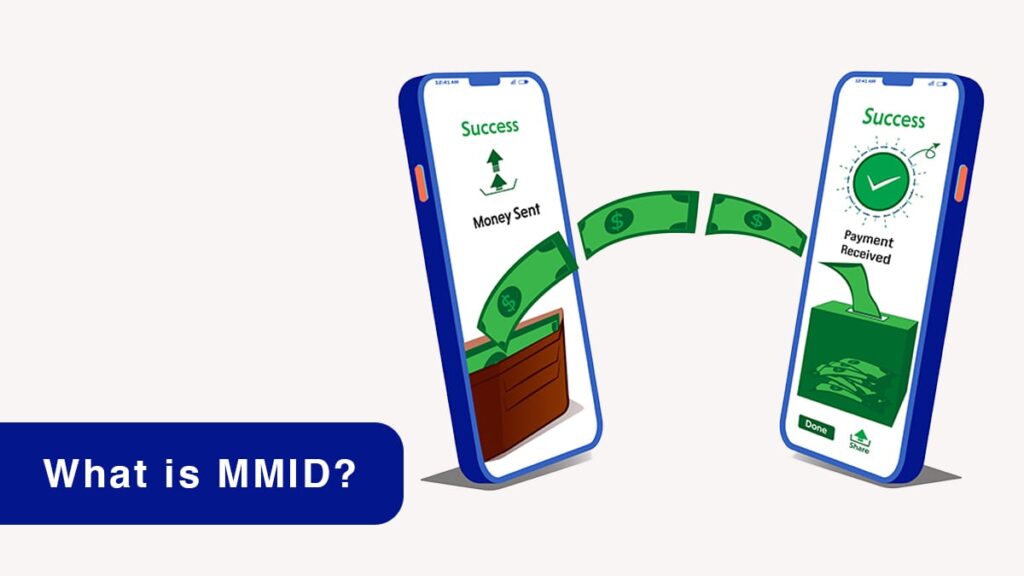India is a pioneer when it comes to digital banking and digital financial systems. Technologies like UPI, and the Digital Rupee a prime examples of the technological advancement of the Indian financial system.
Despite having such amazing technology there are some areas where it lacks and in those areas, the older technology like NEFT, or RTGS can use it.
Indian financial system comes with various options for you to use and make the payment easy and fast. One such payment method that can be used is MMID, which stands for Mobile Money Identifier. In this article, we will discuss What is MMID, Why MMID is required, and various other details related to MMID.

What is MMID?
MMID or Mobile Money Identifier is a unique 7-digit number that facilitates mobile-based financial transactions. This can be a great digital payment method, especially in regions where mobile banking and digital payments are gaining prominence.
This unique 7-digit number is linked to the individual’s bank account, making it a secure means of conducting transactions without the need for detailed account information like Account Number or Bank IFSC Code.
One of the key advantages of MMID-based transactions is the speed and efficiency with which funds can be transferred.
Why MMID is required?
Here are some key reasons why MMID is necessary:
- MMID simplifies the process of mobile-based transactions by replacing the need for providing details like Account Number, and bank IFSC Code, and instead of sharing this information, a 7-digit MMID can be shared which increases security.
- MMID acts as a unique identifier linked to the user’s bank account, enabling seamless transfers between different banks.
- Users can initiate transactions at any time, and the funds are transferred instantly.
- MMID plays a crucial role in promoting financial inclusion by making mobile banking accessible to a wider population.
- MMID contributes to the ongoing shift from cash-based to digital transactions, aligning with the global trend towards a cashless economy.
How to Use MMID for Fund Transfer?
Here are step-by-step instructions on how to use MMID for fund transfer-
- Open the mobile banking app of your bank and login to your account using your login credentials
- You may have to provide OTP which will be sent to your mobile number
- After logging in, navigate to the fund transfer tab followed by choosing the MMID option from the listed fund transfer method, IMPS also falls under the MMID option
- Now, select the beneficiary from your list of the beneficiaries available and ensure that the recipient has a valid MMID associated with their account.
- Now, enter the 7-digit MMID of the recipient and their registered mobile number.
- After that, you’ll have to enter the amount you want to transfer and click on the next.
- After clicking on the next, you’ll have to review all the information and click on the next button.
- After clicking on the confirm button, you’ll have to enter the Transaction PIN followed by clicking on the confirm button.
- Now, some mobile application is required to be verified with an OTP, it will be sent to your mobile number.
- After verification of the OTP, your funds will be transferred using the MMID.
- After completing the transaction, you should receive a confirmation message on your mobile banking app, confirming the transfer.
FAQ
MMID, or Mobile Money Identifier, is a 7-digit number linked to your bank account, used for mobile-based fund transfers. Unlike traditional banking, MMID eliminates the need for sharing sensitive details like account numbers and Bank IFSC codes.
MMID is primarily used for Immediate Payment Service (IMPS) transactions. Users can transfer funds, pay bills, and perform various financial transactions using MMID through mobile banking apps.
To obtain your MMID, log in to your mobile banking app, navigate to the Account Summary section, and you will find an option to generate or retrieve your MMID.
MMID is specifically associated with IMPS transactions. If you are using other methods like UPI (Unified Payments Interface) or NEFT (National Electronic Funds Transfer), you may not need MMID.
No, MMID is unique to each individual’s bank account. Using someone else’s MMID for fund transfers would not be possible or secure.
MMID allows users to transfer funds seamlessly between different banks participating in the IMPS network.
No, MMID is primarily designed for domestic transactions within India. For international transfers, other methods such as SWIFT (Society for Worldwide Interbank Financial Telecommunication) are typically used.
It’s crucial to double-check the MMID before confirming a transaction. If the wrong MMID is entered, the transaction might be sent to an unintended recipient, and it may be challenging to recover the funds.
Transfer limits may vary between banks and depend on individual account profiles. Check with your bank to understand the specific transaction limits associated with MMID-based transfers.
IMPS transactions, including those using MMID, are typically processed in real time. The funds are usually transferred instantly, providing a quick and efficient means of transferring money.



